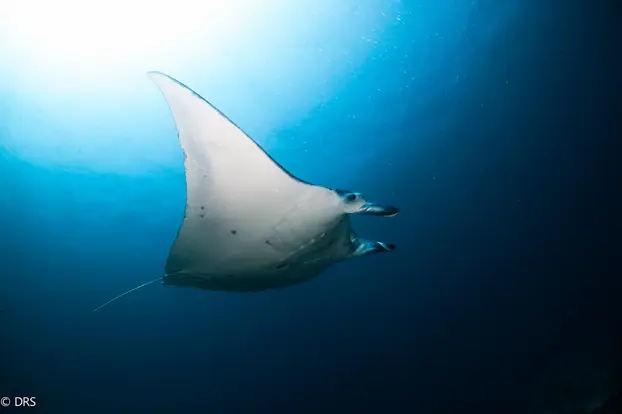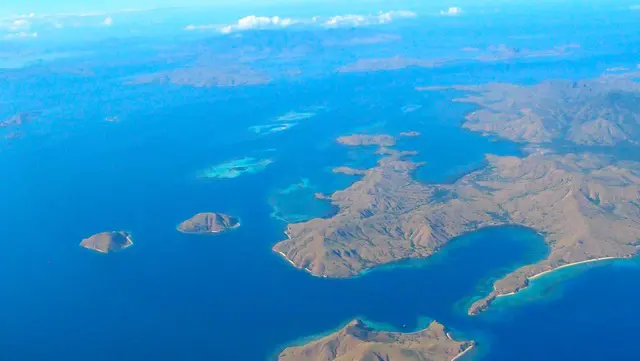
Manta Rays Komodo
In the azure waters of Komodo National Park, amidst vibrant coral reefs and pristine marine landscapes, glide some of the ocean's most majestic creatures – the manta rays. These enigmatic giants, with their graceful movements and impressive wingspan, captivate the hearts of divers and snorkelers who venture into their realm. In this exploration, we delve into the fascinating world of manta rays in Komodo, unraveling their behaviors, ecological significance, conservation status, and the efforts undertaken to protect these gentle giants.
Manta rays, belonging to the genus Manta, are iconic inhabitants of the world's oceans, known for their distinctive appearance and gentle demeanor. In Komodo National Park, two species of manta rays are commonly encountered – the reef manta ray (Manta alfredi) and the oceanic manta ray (Manta birostris). These filter-feeding giants can reach impressive sizes, with wingspans spanning up to 7 meters (23 feet) or more.
Manta rays are highly social creatures, often found in aggregations around cleaning stations, feeding grounds, and breeding areas. They exhibit complex behaviors, including barrel rolls, somersaults, and coordinated movements during courtship rituals. Despite their imposing size, manta rays are harmless to humans, feeding primarily on plankton and small fish filtered through their gill plates as they gracefully glide through the water.
Komodo's nutrient-rich waters provide abundant sustenance for manta rays, supporting diverse populations of plankton and small fish. These filter-feeding giants play a crucial role in maintaining the health of coral reef ecosystems by controlling populations of planktonic organisms and redistributing nutrients through their movements.
Manta rays are known to undertake long-distance migrations across oceanic expanses, traveling between feeding and breeding grounds. While much remains unknown about their reproductive biology, scientists believe that female manta rays give birth to live pups after a gestation period of approximately one year. Breeding aggregations have been observed in certain areas of the park, offering researchers valuable insights into the reproductive behavior of these elusive creatures.
Despite their ecological importance and cultural significance, manta rays face numerous threats across their range, including habitat degradation, overfishing, bycatch, and the illegal wildlife trade. Historically, manta rays have been targeted for their gill plates, which are highly valued in traditional Chinese medicine. Additionally, they are often caught accidentally in fishing gear intended for other species, leading to significant population declines in some regions.
Recognizing the urgent need for conservation action, Komodo National Park has implemented various measures to protect manta rays and their habitats. These include the establishment of marine protected areas, regulations to prohibit fishing and hunting of manta rays, and initiatives to raise awareness among local communities and visitors. Furthermore, research and monitoring programs are underway to better understand the ecology, behavior, and population dynamics of manta rays in the park.
The increasing popularity of manta ray encounters has led to a rise in ecotourism activities in Komodo National Park, with numerous dive operators offering guided tours to manta ray aggregation sites. While responsible tourism can provide valuable economic benefits and support conservation efforts, it is essential to minimize the impact on manta rays and their habitats.
Guidelines for responsible manta ray encounters include maintaining a safe distance from the animals, avoiding chasing or touching them, and minimizing disturbances during feeding and breeding activities. By adhering to these guidelines and supporting ethical tour operators, visitors can contribute to the long-term sustainability of manta ray tourism in Komodo while ensuring the well-being of these magnificent creatures.
The manta rays of Komodo National Park epitomize the beauty and diversity of marine life in this pristine corner of the world. With their graceful movements and gentle demeanor, these filter-feeding giants inspire awe and wonder among all who encounter them. As stewards of the ocean, it is our responsibility to protect and conserve these majestic creatures for future generations to admire and cherish. Through concerted conservation efforts and responsible tourism practices, we can ensure that the waters of Komodo remain a sanctuary for manta rays and all marine life that call this extraordinary place home.


